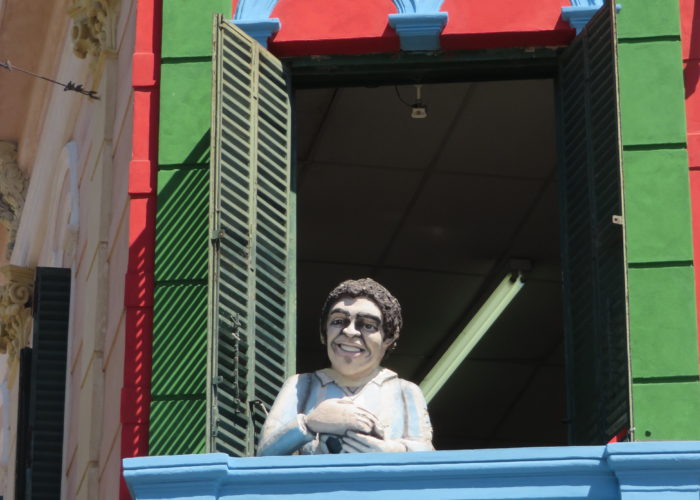This content has been archived. It may no longer be relevant

One of Buenos Aires most colourful neighbourhoods is La Boca and a must for all visitors and especially those with even a passing interest in football. La Boca is the neighbourhood around the old port of Buenos Aires where many of the first generation immigrants came to the city. Many of the original immigrants were from Italy and the Italian influence is pretty strong in the whole of Buenos Aires.

Many of the residents of La Boca worked in the the docks and one of the traditions from the old port carried over into the neighbourhood is how they use all the left over paint from the ships and use the paint to not only paint all the buildings in multiple colours but also parts of the pavement too.
Leading straight from the port front is Caminito, which acts as the centre for all the painted buildings, many of which have been turned over into bars, restaurants and tourist shops. In many of the upper windows are painted statues of famous Argentines, with Diego Maradona and Evita to the fore but many others too, including some other quirky statues such as ET. In amongst the restaurants are a number of Tango dancers in all their finery showing off their skills and also for a small fee allowing tourists to perform some of the classic tango moves. While the area gets crowded, with many tourists including the inevitable cruise ship tourists too with their badges detailing what ship group they are from. Notwithstanding the heavy preponderance of tourists Caminito is simply a great place to sit with a beer and observe all the activity going on around together with the vibrant colours of all the buildings.

About three blocks up from Caminito is the Alberto J. Armando Stadium, more commonly called La Bombonera, which means chocolate box, and is where Boca Juniors play. Boca are one of the great world football clubs and together with River Plate form the great rivals in Argentine football.

The stadium is broadly shaped like a chocolate box, being circular with very steep sides as it is hemmed in by the surrounding buildings. It is very much a traditional stadium, with standing terraces at both ends, and makes you realise how much tradition and atmosphere has been lost back in Europe with all the modern or massively redeveloped stadiums. The stadium is largely made of concrete with three tiers and as a result the sound reverberates around the stadium, which even on our tour could be clearly heard, so one can only imagine what it would be like when a game is being played and the fans not only singing but also climbing up and down the fences that protect the pitch.

Boca play in an iconic blue strip with a deep yellow band round the middle. The story goes that Boca, who originally played in black and white stripes felt that the shirt lacked appropriate colour to truly represent the area. After trying out the classic Argentine light blue or Albiceleste, they lost a match with a local rival where it was agreed that the winner was to use light blue, so they had to start again. As the story goes the next decision on the colour of the shirts was to be based on the colour of the flag of the next ship to dock in the port. The next ship was from Sweden, and ever since Boca have adopted the deep blue and yellow shirts.

Date: 03/03/2018


